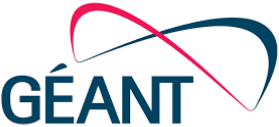Network Auto Discovery and Reconciliation
Trusted by:


















What is network auto discovery and reconciliation, and why should the two processes matter to operators? Together, they combine to put network engineers in much greater control of the big pictures of network topology and performance – which helps them to run their networks more effectively.
To some extent, network auto discovery and reconciliation are “background” functions, by which we mean somewhat buried out of sight and away from the more “glamorous” domains of telecoms operations management. But the devil, as ever, is in the detail, so they’re also extremely important.
If you want your network to perform optimally, try getting there without a comprehensive, up-to-date overview of what is likely to be a complex, multi-vendor, multi-domain, overlapping generation backbone. That’s the problem – seeing the big picture – that auto discovery and reconciliation processes and solutions, solve.
Collectively, they enable an accurate picture of your entire inventory to be obtained – providing a complete record at a given moment in time. Your inventory platform should be able to perform the process of auto discovery and reconciliation, so that you can ensure that you have such an accurate picture, at all times.
With the insights provided (by auto-discovery and reconciliation), important questions can be answered in operational management areas including:
• Network Planning
• Service Orchestration
• Service Assurance
• Network Design and Build
• New Integrations and Deployments
• Performance and KPI monitoring
…and others. Together, the answers allow the operator to benefit from a holistic view of the network, more rapidly deploy new components, more effectively leverage network data, and to enhance network design and build.
Beneath The Hood: How Does It Work?
The source of reconciliation and auto discovery relies in discovery via interfaces to a network management system, element management system, and to the network elements themselves. This enables a snapshot of data from any of the three (NMS, EMS, or NE) to be compiled and then compared (and reconciled) with data held in the operator’s inventory database. How often this happens is at the operator’s discretion, but it should be at least once a day.
Seven “Steps” Are Involved, As Follows:
1. Reconcile process
As described above, raw data is collected from the NMS, EMS, and/or NEs. The data will be normalized to a standard VC4 Service2Create format so that the actual process of reconciliation can take place with the network inventory data. Sometimes there is need to enrich the data, because some NMS, EMS or NE data sets do not contain fullnetwork topology data. VC4 telecom experts, having many years of telecom network experience add such data and scripts. Each element of the collected data drawn from an inventory item (such as equipment, connection, etc.) is given a unique identifier that creates a relationship between its name in the inventory and its identity in the NMS. The inventory can then query and compare the data in the reconcilable tables with the data that’s stored in its own database.
What happens when the data doesn’t match and there’s a reconciliation problem? In these cases, either the inventory auto-discover process automatically corrects the error in the database, or it creates a reconcile form for the operator to handle as it wishes. Either way, anomalies are swiftly addressed and resolved.
2. Automatic discovery process
This process automatically updates data in database and creates new records, for instance when there is new equipment or new connections in the network that are not yet in the inventory management system, incorrect serial numbers in the inventory management system database, new hardware software versions, etc. The operator can decide which components are automatically discovered or reported when issues arise. At VC4, some customers prefer to be 100% in control and don’t want any automatic object creation, others want full synchronization from the NMS/EMS or NEs to the inventory, meaning auto creation and auto deletion.
3. Equipment discovery process
This collects equipment information such as name, type, parameters, card names, slot positions, etc. Really, the information collected can be configured to the operators’ requirements. There can be unavoidable issues here if an element or system doesn’t provide all the required information automatically, but , as explained earlier, often such issues can be mitigated by VC4.

4. Port discovery
This is the automatic process for discovery of the equipment ports. Most ports are related to cards or SFP/XFPs, but there could also be fixed ports and logical/virtual ports. Any mismatch will be discovered and presented on the screen. Service2Create (S2C) will follow vendor equipment specifications to automatically create the correct port naming and settings.
5. Physical connection discovery
Discovery of physical connections is reliant on the availability of network data. Generally, this can be sourced from the Network Management System which, in many cases, holds information about the full network topology. As a rule, northbound interfaces (for example, CORBA or REST APIs) provide the required physical connection details. If there is no Network Management System, the required information can be sourced directly from the Network Elements. When connecting to the NEs, specific commands (e.g. neighbor commands or similar) will be used to get the physical connections from node A to B.
6. Logical connection and service discovery
This, too, is heavily reliant on the availability of network data that can be sourced from the Network Management System or Network Elements. Different vendor equipment types will have their own command sets to retrieve the logical connections and services data. Not only the logical or service information itself is important, also how these connections or services are routed through the network, via which channels, VLAN IDs or similar.
7. Other network objects
Other network objects, such as IP addresses, telephone numbers, VRFs and Bridge Domains can be retrieved from the live networks as well. Such data will follow a similar process, first discovery from the network, then synchronization with the inventory data. Discrepancy reports can be made available, for example duplicated IP addresses, duplicated VRF names, incorrect VRF names, phone numbers in network but not in Service2Create, and many more.
Putting The Picture Together
With the raw information collected above about all aspects of the network, network auto discovery and reconciliation can then deliver a clear, usable end-to-end picture that is invaluable for network engineers. It allows them to access an up-to-date topology map, do quick fault correlation and achieve faster service delivery. Put in simple terms, they can’t navigate as effectively without the map that reconciliation and discovery provides.
One example of a leading network auto discovery and reconciliation solution comes from VC4. VC4’s next-gen infrastructure management platform, Service2Create [previously known as IMS], enables network operators to automate these processes across multi-domain environments — from discovery to reconciliation — with greater efficiency and clarity. Service2Create or S2C in its abbreviated format, is a complete inventory management solution that’s optimized for all networks. Some examples: WDM/OTN, MPLS/IP, SD-WAN/SDN, Ethernet, xPON, xDSL, SDH/SONET, Microwave, Mobile Core and RAN (2G, 3G, 4G, 5G), Voice/VoIP, WIFIand VSAT. It enables operators to take control of their data, eliminating silos and providing a single view of all assets and relationships.
Supporting any generation of technology, S2C helps operators to plan new investments more efficiently and seamlessly integrate operations, end-to-end. By bringing all data together, Service2Create is the foundation of operational excellence, providing:
• Complete and up-to-date overview of all network assets
• Insight to drive optimization and performance
• Integration to business processes
• Frictionless automation and service delivery
• Enhanced KPIs, costs management and financial performance
• Accurate, timely reconciliation to keep ahead of dynamic network changes
To discover more about how VC4 Auto Discovery & reconciliation works, click here to find out more: https://www.vc4.com/resources/network-auto-discovery-and-reconciliation/



